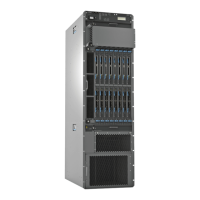CHAPTER 14
Troubleshooting Packet Transport Switch
Hardware Components
•
PTX5000 Troubleshooting Resources Overview on page 117
•
PTX5000 LED Overview on page 118
•
PTX5000 Alarm Messages Overview on page 119
•
Troubleshooting the PTX5000 Centralized Clock Generators on page 120
•
Troubleshooting the PTX5000 Cooling System on page 122
•
Troubleshooting the PTX5000 Control Boards on page 135
•
Troubleshooting the PTX5000 FPCs on page 136
•
Troubleshooting the PTX5000 Host Subsystem on page 138
•
Troubleshooting the PTX5000 Power System on page 139
•
Troubleshooting the PTX5000 Routing Engines on page 145
•
Troubleshooting the PTX5000 PICs and PIC Cables on page 147
•
Troubleshooting the PTX5000 Switch Interface Boards on page 148
•
Troubleshooting the PTX5000 Switch Fabric on page 151
PTX5000 Troubleshooting Resources Overview
To troubleshoot a packet transport switch, you use the Junos OS command-line interface
(CLI), LCD, alarms, devices connected to the alarm relay contacts, and LEDs on both the
components and craft interface.
•
LEDs—When the Routing Engine detects an alarm condition, it lights the red or yellow
alarm LED on the craft interface as appropriate. In addition, you can also use the
component-specific LEDs on the craft interface and on the faceplate of a component
to troubleshoot the packet transport switch.
•
LCD—When a red or yellow alarm occurs, the cause of the alarm messages is displayed
on the craft interface LCD. Use the CLI to display more information about the alarm.
•
Alarm devices connected to the alarm relay contact—When a red or yellow alarm
occurs, it trips the corresponding alarm relay contact.
•
CLI—The CLI is the primary tool for controlling and troubleshooting hardware, Junos
OS, routing protocols, and network connectivity. CLI commands display information
117Copyright © 2012, Juniper Networks, Inc.

